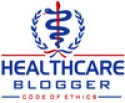Recreational therapist Diane Groff, Ed.D., and exercise physiologist Claudio Battaglini, Ph.D., both of the University of North Carolina, Chapel Hill, recently completed an exploratory study on the role of recreation therapy in facilitating well-being in survivors of breast cancer using HeartMath’s handheld emWave Personal Stress Reliever® (www.emwave.com). HeartMath® is internationally known for their research on the heart, stress, and emotions and the effects of stress on health. Their award-winning emWave Personal Stress Reliever (PSR) essentially mirrors one’s emotional state by reading heart rhythms and providing real-time feedback so one can more effectively manage stress.
The two UNC researchers are strong advocates of developing patients’ psychological and physical strength, which are needed to combat the debilitating side effects of cancer treatment. Since October 2006, Groff and Battaglini have reviewed a series of case histories in which 29 survivors within six months of post-treatment for breast cancer participated in the “Get REAL & HEEL” program, which consisted of a variety of leisure therapy interventions. This program was offered to patients at no cost, thanks to the NC Triangle Affiliate of the Susan G. Komen Foundation.
In addition to strength-based physical exercise with a personal trainer, the Get REAL & HEEL program offered recreational therapy activities such as cognitive and behavioral interventions for stress management, relaxation training, creative and journal writing, expressive arts, leisure counseling and biofeedback (HeartMath’s emWave Personal Stress Reliever, and Wild Divine Healing Rhythms.) Group recreational interventions included dance, expressive arts, group outings and exercise activities with other women in the group.
In the research study, participants were able to choose which type of real-time feedback intervention they primarily used. The preferred intervention was HeartMath’s emWave Personal Stress Reliever. Participants were given instruction on HeartMath’s Quick Coherence® technique – a scientifically validated process for stress relief that facilitates heart-rhythm coherence. One unique aspect of the HeartMath intervention is its focus on heart-rhythm coherence, a measurable state that occurs when the heart, brain, and nervous system are working in harmony.
Study participants all were loaned emWave PSR devices so they could practice at home. Participants stated that they really liked how easy and convenient the emWave PSR was to use. It is worth noting that the device includes an animated instructional CD-Rom that guides the user through instruction on the Quick Coherence technique. The study participants stated that they really liked how easy and convenient emWave PSR was to use.
Soon an unexpected compliance problem was discovered, one which researchers don’t commonly encounter. Several participants were reluctant to return their emWave PSR units when the Get REAL & HEEL program ended because they were somewhat attached to using them. Fortunately, the staff at HeartMath kindly offered these participants a special discount and many participants purchased their own device so they could continue their practices after the study ended.
This unusual scenario led the HeartMath Research Team to investigate this research endeavor more closely. Institute of HeartMath Research Coordinator Tani Shaffer, Ph.D., recently interviewed Dr. Groff about the research results and here discusses her participants’ enthusiasm for the HeartMath intervention:
Dr. Groff said the HeartMath emWave PSR and Wild Divine Healing Rhythms programs offered unique aspects to the participants’ understanding of the benefits of biofeedback and HeartMath’s heart-rhythm feedback. According to Dr. Groff, the participants expressed a particular preference for the emWave Personal Stress Reliever because this type of intervention, with its heart-rhythm feedback, demonstrated a clear relationship between emotions and physiology.
As women learned HeartMath skills in the intervention, they began reflecting on their stress-management styles before the onset of their illness. Many began to question the relationship between their disease and stress, as they realized that they had been living with a serious deficit of exercise, poor nutrition, excessive stress, ineffective coping mechanisms or little awareness of the impact of chronic stress on their overall health.
Further, Dr. Groff states that it was especially striking to her and her colleagues that the majority of the participants were able to reach heart coherence with ease and within the first five minutes of instruction. In the context of managed care and hospital visits, it is truly remarkable to discover an intervention that can be taught and mastered in such a short amount of time. Dr. Groff and her team were especially pleased to witness the participants’ thrill of discovery and the warm glow of feeling empowered by learning this new skill to regulate their emotions and physiology.
Although these women generally responded enthusiastically to the idea of a personal trainer and lifestyle coach after completing their cancer treatment, it also was beneficial to learn they had the inner resources necessary to master their own coping and self-regulation, thus giving them a sense of control over their bodies – something that had been surrendered to others for a considerable amount of time.
As one participant stated in her therapy journal, “If nothing else, I am learning to control my emotions and that is having a tremendous impact on my life.” Indeed, feelings of empowerment such as these can have a tremendous impact on one’s entire life, and the lessons that can be learned from HeartMath’s tools continue to offer wellness and hope to counter and more effectively manage illness and stress.
For the full research paper go to: www.heartmath.org/LessonsfromSurvivors.
Copyright © HeartMath. Since 1991 HeartMath has been dedicated to decoding the underlying mechanics of stress. HeartMath is internationally recognized for their solutions to transform the stress of change and uncertainty, and bring coherence and renewed energy into people’s lives. Research and clinical studies conducted by HeartMath have examined emotional physiology, heart-brain interactions, and the physiology of learning and performance. Through their research they have demonstrated the critical link between emotions, heart function, and cognitive performance. HeartMath’s work has been published in numerous peer-reviewed journals such as American Journal of Cardiology, Stress Medicine, and Preventive Cardiology, as well as business journals such as Harvard Business Review and Leadership Excellence. HeartMath’s organizational clients include NASA, BP, Duke University Health System, Stanford Business School, Redken, Kaiser Permanente, Boeing, and Cisco Systems, as well as dozens of school systems and thousands of health professionals around the world. To learn more about HeartMath, go to www.heartmath.com.

 RSS Feed
RSS Feed































